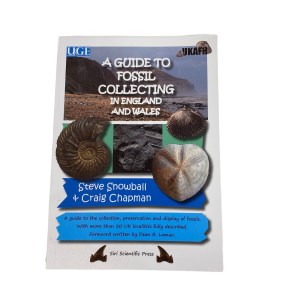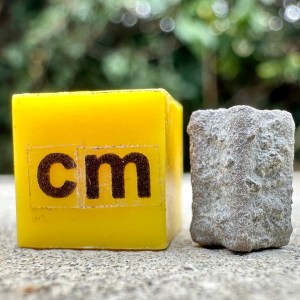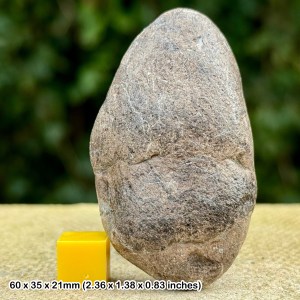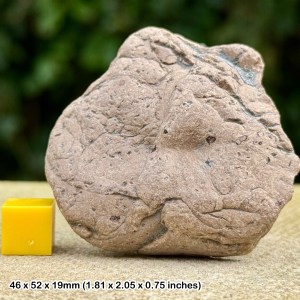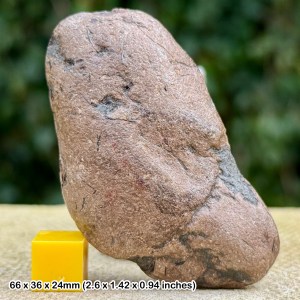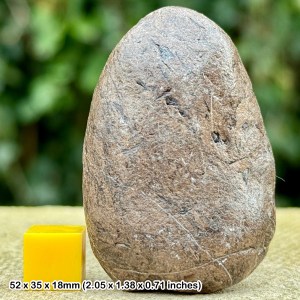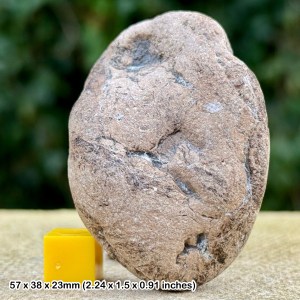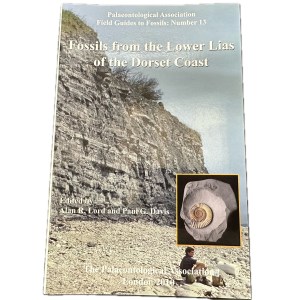Lyme Regis is probably the most commercial fossil town in the UK, with fossil shops, museums, fossil tours, its own annual Fossil Festival and much more – there’s quite no other town like it! The famous beach of Lyme Regis yields large numbers of fossils and people flock here by their thousands to try their luck. There are regular guided fossil walks, showing you where to find fossils and providing general information. The town has had a lot of money spent on making it one of the most beautiful towns in Dorset. Even the lamp posts in Lyme Regis are shaped like ammonites!
DIRECTIONS
♦ There are several car parks in the town of Lyme Regis and access to Church Cliffs is best done from the harbour. There is also a fantastic viewpoint where, on a good day, you can see right along the Jurassic Coast, to the cliffs of Bridport and Burton Bradstock, and beyond to Chesil Beach.
♦ Access can also be had from Charmouth.
♦ Ref: 50.72957°N, 2.92715°W
PROFILE INFO
FIND FREQUENCY: ♦♦♦ – Lyme Regis is world famous for its highly fossiliferous cliffs but is also widely known for being the most commercial fossil location in the UK.The huge number of commercial collectors, who battle it out to make the best finds, do make collecting limited but there there is usually still plenty to be found. Undoubtedly, collecting is best after harsh winter storms, rather than in the high summer season but do come prepared for the cold!
CHILDREN: ♦♦♦♦ – Lyme Regis is one of the best locations for children. They can walk along the foreshore picking up ammonites and or just sit on the beach! A guided tour is a great place to begin and children (and adults) will benefit from the expertise of the many experienced guides. Bookings can be made at Lyme Regis Museum but book early to avoid disappointment- they are very popular, especially during school holdays.
ACCESS: ♦♦♦♦♦ – The car parks at Lyme Regis are very close to the beach, with toilets, cafes and the fossil heritage information centre nearby. Charmouth Road car park (DT7 3DW) is good for access to the east end of the town. The steps from it bring you to the sea wall, the Spittals and Black Ven The location is excellent for children and families. For those who prefer commercial fossils expeditions, these are available in the main town and online.
TYPE: – Fossils are mostly found on the foreshore and in among the rocks and boulders at Lyme Regis, but can also be found at the bottom of scree slopes, slippages and occasionally the cliff. Note that hammering the cliff or bedrock is not permitted, because Lyme Regis is part of the Jurassic World Heritage Coastline. However, you are far more likely to find fossils on the foreshore and in between the rocks including ammonites, coprolites (fossilised poo!), marine reptile bones and shells.
FOSSIL HUNTING
The site is part of the Jurassic World Heritage Coastline, a SSSI and private land. No hammering the cliff is allowed and digging is strictly forbidden. Damage has already been caused to the heritage site by people using power tools. This is strictly against SSSI rules and any attempt to ignore them may result in prosecution. Do not attempt to dig into, or climb, the cliffs, as this is extremely dangerous and cliff falls at Church Cliffs frequently occur. Keep well away from the base of the cliff.
The best place to collect fossils is within the soft clay between the hard limestone ledges. Not all the shale beds will contain fossils, but some contain fish fragments and occasionally small, complete fish. Some of the best beds are exposed below beach level after scouring has taken place. This also makes collecting less dangerous than searching in the shale within the cliff face.
There is such a vast variety of fossils at Lyme Regis that one can almost expect to find anything. However, competition to make the best finds is very high, so you will possibly find very little during the summer season. The best months are during the winter and spring, when there are gales and extremely high tides.
The beach at Church Cliffs can be littered with wonderful, large moulds and impressions of ammonites. These are both too heavy for collectors to bring back and too worn to make such an effort worthwhile. For that reason, they have been left on the beach for everyone to see and enjoy. Please do not destroy them – they are a fine example of Lyme Regis’ fantastic Jurassic heritage. Cliff falls do yield complete ammonites, which can be seen all around Lyme Regis and Charmouth, in shops, museums, gardens, walls and as parts of houses.
There are also a number of shells to be found in the hard limestone, some of which are quite large. These are very difficult to collect and it is best to leave them for everyone else to see and enjoy. A range of ammonites and shells can also be found within other hard layers, but, most interesting is the Fish Bed, which continues to Chippel Bay. Complete fishes can be found, especially small fish in the shales.
Flatstones at Lyme Regis can contain well-preserved ammonites and insects, but these are unfortunately rare and only a small percentage contains fossils. In the past, several complete fish have been found in these nodules, in perfect condition.
There are also a wide range of rocks lying on the beach, some of which contain fossils and others contain the fossil casts.
GEOLOGY
At Church Cliffs, 26m of Blue Lias are well exposed, whereas, at Black Ven, 25m of Shales-with-Beef often slip down in front of the Blue Lias. For more information on Black Ven; see our guide to Charmouth and for information on the area west of Church Cliffs, see our guide to Chippel Bay.
At the top of the Blue Lias is the Table Ledge, where ammonites can be found. The alternating beds of soft clays and hard limestone below this makes the cliffs extremely unstable and care should be taken at all times.


SAFETY
Common sense when collecting at all locations should always be used and prior knowledge of the tide times is essential. Care should especially be taken at Lyme Regis of tides, as the sea can easily cut you off, especially at Church Cliffs. Climbing slippages is also not recommended. This is dangerous because of deep mud, which may seem hard at first sight, but could be extremely dangerous.
EQUIPMENT
It really depends on what you aim to collect, as to what tools to take. Collecting is best done on the foreshore, in which case, just good eyes are required. Collecting from the soft clays (especially from the slippages on the foreshore at Black Ven) is best done using a knife or pick and a small spade. If you intend to collect by splitting rocks (especially nodules), you should ideally use a good hammer and possibly a chisel. Do not dig into the cliff or bedrock at Lyme Regis. It is an SSSI site (so conforming to the Fossil Collecting Code is essential). For safety reasons, hammering or digging into any cliff is to be avoided, in any case and you have a much greater chance of finding fossils loose on the foreshore.
ACCESS RIGHTS
This site is an SSSI and forms part of the UNESCO World Heritage Jurassic Coast. This means you can visit the site, but hammering the bedrock is not permitted. For full information about the reasons for the status of the site and restrictions please download the PDF from Natural England – SSSI Information – West Dorset
It is important to follow our ‘Code of Conduct’ when collecting fossils or visiting any site. Please also read our ‘Terms and Conditions‘
LINKS
♦ Buy Fossils, Crystals, Tools
♦ Location Discussions
♦ Deposits Magazine
♦ Join Fossil Hunts
♦ UK Fossils Network
-
A guide to fossil collecting in England and Wales
£24.20 -
A guide to fossil collecting on the West Dorset Coast
£24.20 -
Crinoid star stem fossil – tidmoor point, dorset, oxford clay, jurassic period
£2.16 -
Fossil Ichthyosaur Coprolite – Jurassic Coast Fossil from Black Ven Marls, Lyme Regis, Dorset, UK – COA
£36.00 -
Fossil Ichthyosaur Coprolite – Jurassic Coast Fossil from Black Ven Marls, Lyme Regis, Dorset, UK – COA
£36.00 -
Fossil Ichthyosaur Coprolite – Jurassic Coast Fossil from Black Ven Marls, Lyme Regis, Dorset, UK – COA
£36.00 -
Fossil Ichthyosaur Coprolite – Jurassic Coast Fossil from Black Ven Marls, Lyme Regis, Dorset, UK – COA
£36.00 -
Fossil Ichthyosaur Coprolite – Jurassic Coast Fossil from Black Ven Marls, Lyme Regis, Dorset, UK – COA
£36.00 -
Fossils from the Lower Lias of the Dorset Coast – Field Guide to Fossils: No 13
£23.00









































